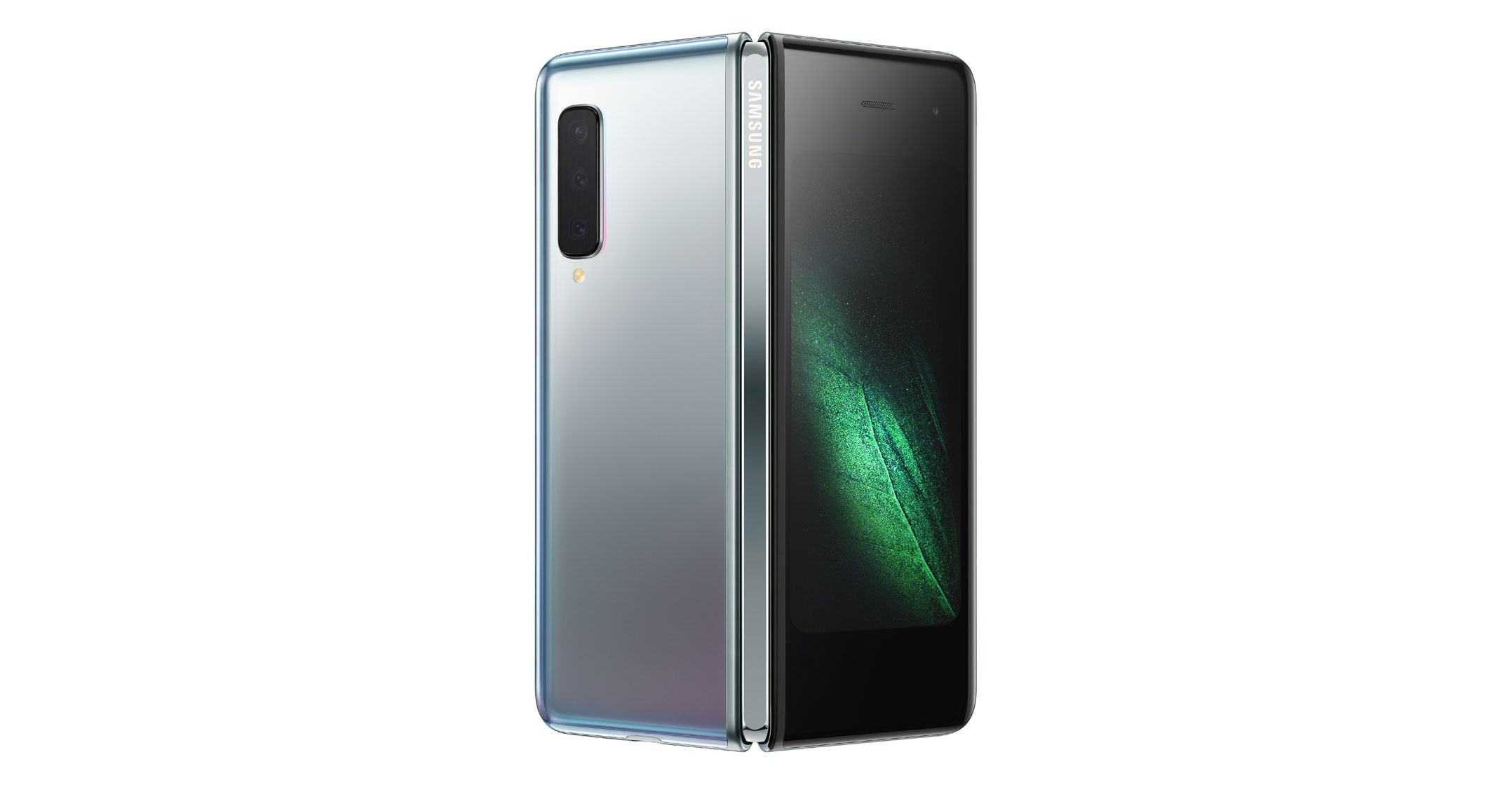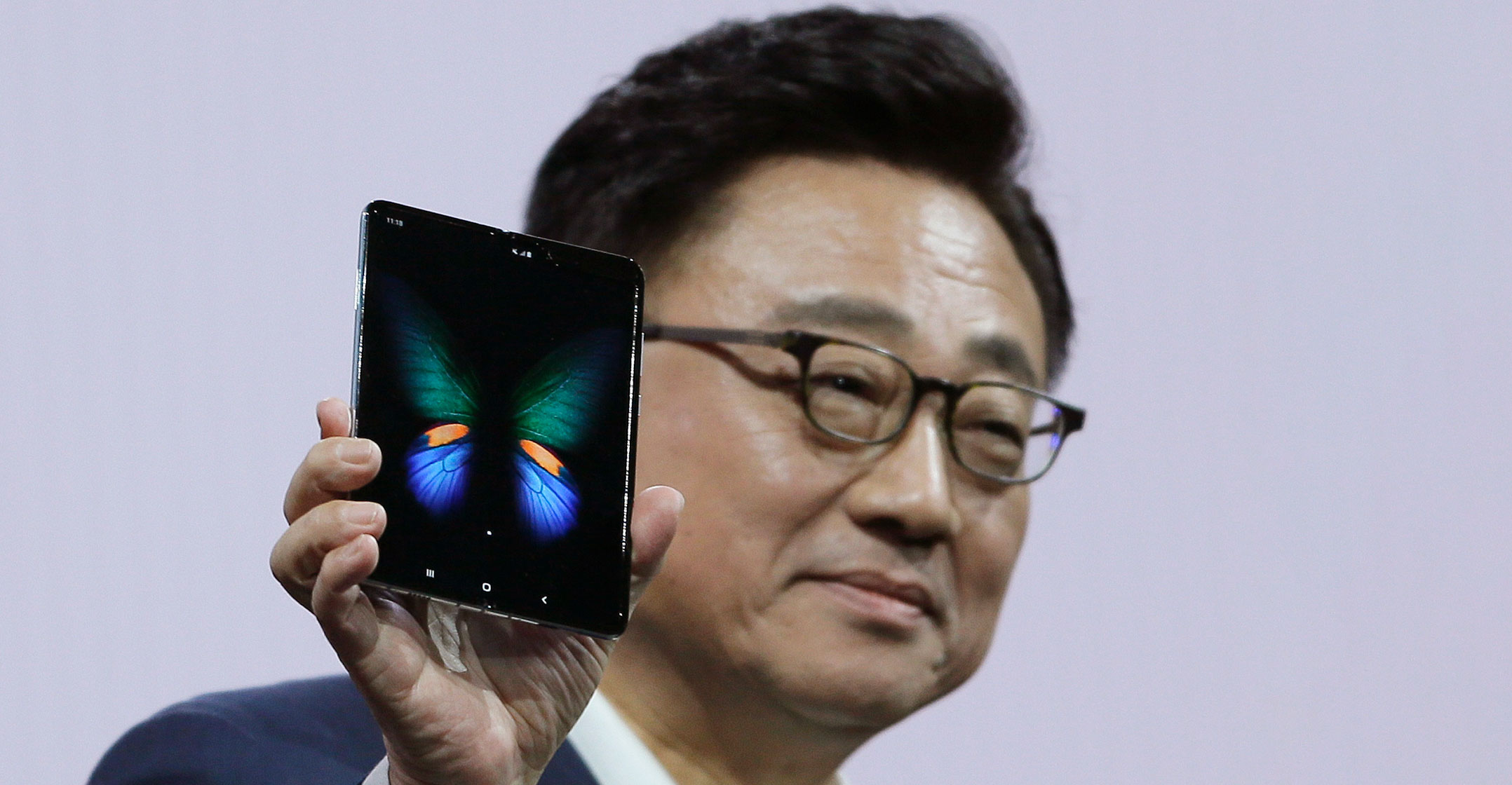
With Samsung Electronics finally launching its troubled Galaxy Fold, success for the US$1 980 luxury handset may be measured not in how many it ships, but how many competitors decide to develop their own.
Pre-release enthusiasm for the device turned to exasperation in April when review units were found to have a severe defect related to the folding screen design. That made reviewers, analysts and investors rightfully sceptical about whether Samsung had gone too far and fallen off the bleeding edge of technology innovation. Three years earlier, the South Korean giant had grappled with exploding batteries in the Galaxy Note7, ultimately discontinuing the device after a botched recall.
Management handled the setback much better this time, making the pragmatic decision to delay release of the Fold pending a redesign. Now that it’s available, the spotlight will once again be on the screen to see whether the design can hold up to daily wear and tear.
Joining the crowds scrutinising every millimetre of the screen and its hinge will be executives at Huawei Technologies, Oppo, Vivo, Xiaomi and even Apple. While all are rivals to Samsung in smartphones, they’re also potential customers for its displays.
Samsung’s virtual lock on organic light-emitting diode (OLED) technology over the past few years helped that division post an impressive run of operating profits as leading names, including Apple, clamoured to get their hands on these brighter, lower-power displays. That star has since faded. The global smartphone industry is now in a funk, and Samsung isn’t alone in wanting to offer something fresh and exciting to juice sales.
That makes the Fold a product of two divisions at Samsung. The smartphone unit naturally wants an awesome design that sets tongues wagging, while the display division wants to be able to show prospective clients what it can do. In this regard, the Fold is like a concept car for smartphones. It’s intended to showcase the company’s technological brilliance rather than drive sales.
Engineering marvel
If the display division can pull it off, foldable technology will be seen as an engineering marvel. While a crease is still visible in the middle of the folded device, it’s not obtrusive. Other features, such as transition from closed to open, work well. The wider reception among media seems to follow a similar tone.
For the consumer-facing smartphone division, the challenge will be overcoming prolonged upgrade apathy among handset users. At the same time, the business can ill-afford another product defect that would cost money and damage the brand.

If customer reviews are positive, then both divisions of Samsung will be able to claim victory. More broadly, it will show that the company can manage to both innovate and execute. It will also demonstrate that the company has learnt the lessons of the Galaxy Note7, having reacted promptly and appropriately on this occasion to avert what could have been a PR disaster.
The Galaxy Fold is only the start. Samsung is working on a new foldable that will collapse into a compact square. That device will bring with it a further array of design, engineering and marketing challenges.
The real success of the handset, though, will be seen when competitors start to roll out their own foldable phones — using Samsung screens, of course. — Reported by Tim Culpan, (c) 2019 Bloomberg LP




